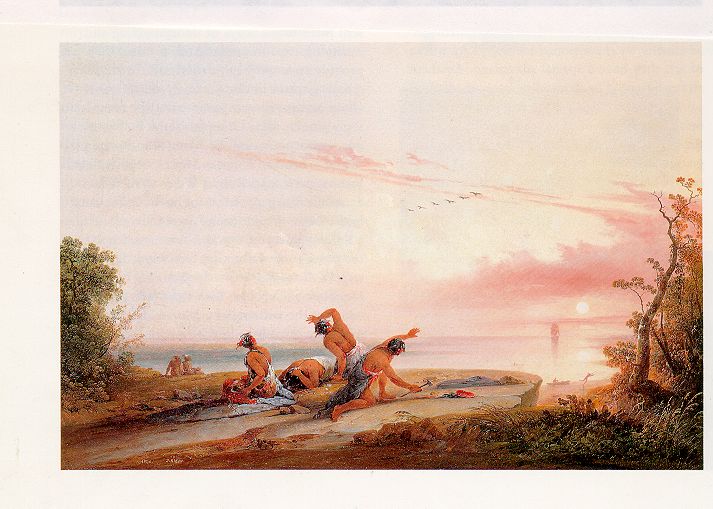Painting. "Coming of the White Man." (1850) Joshua Shaw.


1
Painting. "Coming of the White Man." (1850) Joshua Shaw.
What did the Tainos of Guanahani (the Native American name for
the island Columbus re-named San Salvador) think as they saw for
the first time at dawn the approach of European sails out of the
east? Joshua Shaw, painting just after the American victory over
Mexico in the Mexican War and at a crest of expansionist fervor
embodied by the phrase, "Manifest Destiny," suggests that the
Tainos were, like, wow, laid back, struck with awe. The
glimmering sails of Columbus' ships and the sun rise out of the
eastern horizon like the stars of an awesome new divinity. The V
of the birds presages a new migration from east to west and
perhaps evoke the landfinding dove of Noah's ark, forrunner of
the Covenant. The group of Tainos rock backward, shielding their
eyes from the glare of this new day, and no, that red item on the
rock by the tomahawk holding hand (itself an anachronism) of the
male figure is not a Stanford scarf, but a scalp which this
individual just happens to have been carving prior to sighting
the ships. Obviously these primitive people need to be
christianized and civilized. On the shore a couple flee from
their hastily beached fishing vessel; to the right stands a
withered tree, a standard symbol for "the Vanishing American,"
the first people whose day is done.
Although painted as facing a stage, with the observer's
viewpoint focused through that of the Tainos, the values of this
painting are, of course, thoroughly European-American.